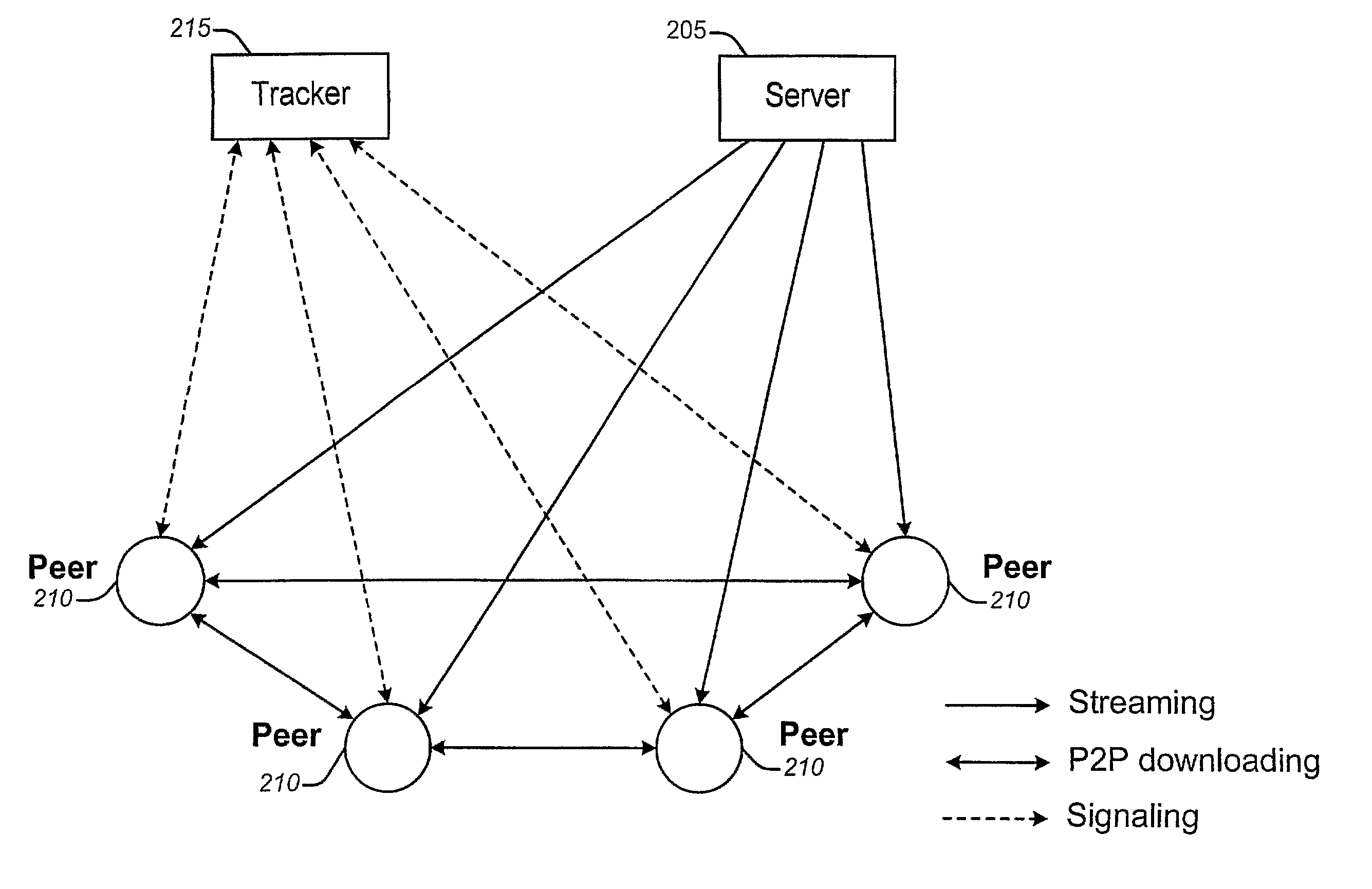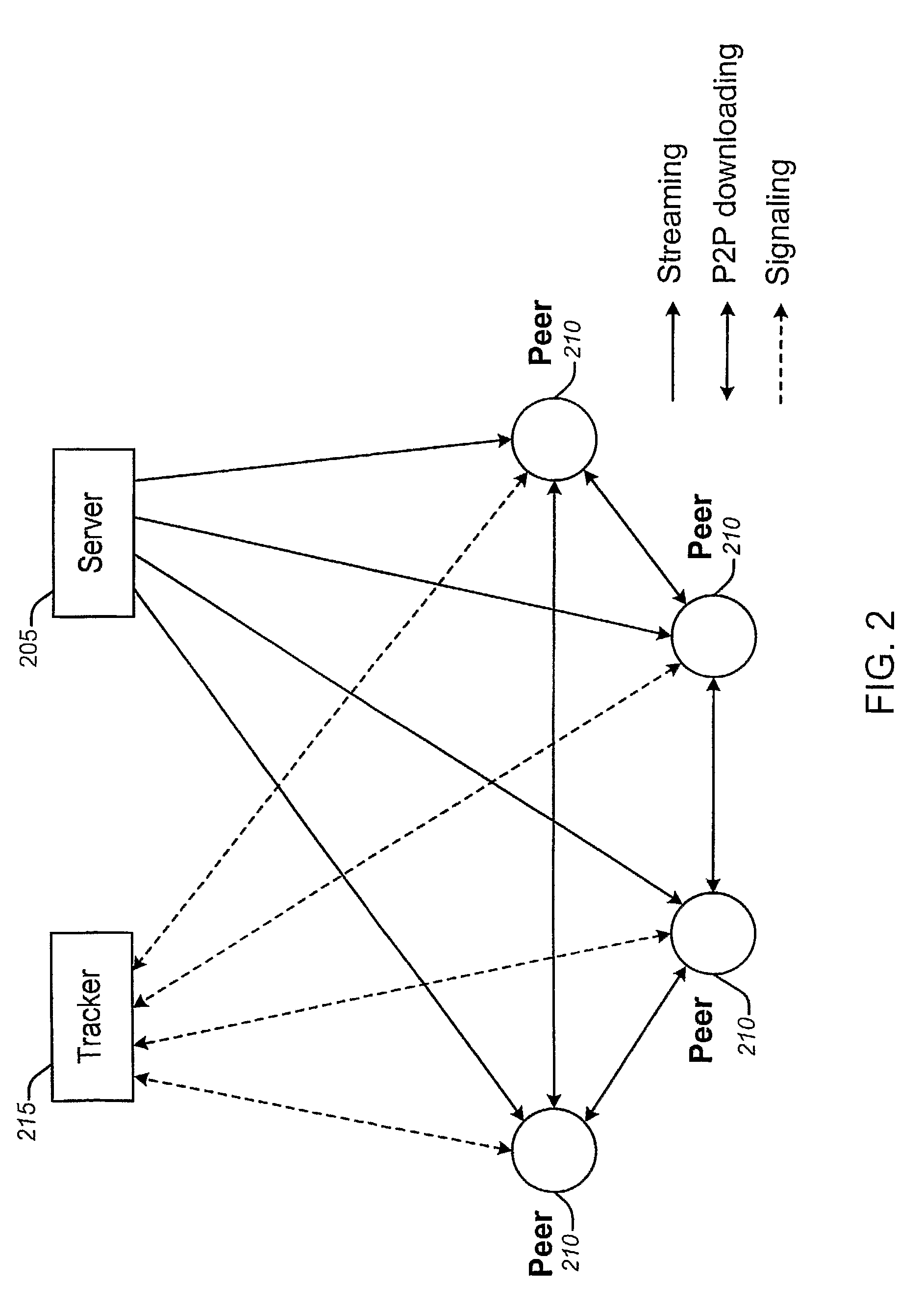Performance aware peer-to-peer content-on-demand
a peer-to-peer, performance-aware technology, applied in the field of peer-to-peer networking, can solve the problems of different technical challenges, start-up delay without sacrificing system scalability, and workload imposed on the server, so as to reduce workload and improve perceived performance at the client end.
- Summary
- Abstract
- Description
- Claims
- Application Information
AI Technical Summary
Benefits of technology
Problems solved by technology
Method used
Image
Examples
Embodiment Construction
[0017]Users of video-on-demand service watch different portions of video at any given moment. In order to enable the content sharing among users and maximize the amount of content that is delivered through a peer-to-peer network, it is assumed that each user has the storage capacity to cache a partial copy and / or the entire copy of content that has been played. This is a reasonable assumption given the rapidly increasing storage capacity of video playback devices. It should be noted that a video playback device is any device capable of receiving and playing back video (stored or live) including but not limited to computers, laptops, personal digital assistants (PDAs) and mobile devices. A peer-to-peer network is not limited to a wired line network and may be a wireless or wired line network or a hybrid network employing both wired line and wireless connections.
[0018]In the segmented peer-to-peer video-on-demand method and apparatus of the present invention, a video clip is divided i...
PUM
 Login to View More
Login to View More Abstract
Description
Claims
Application Information
 Login to View More
Login to View More - R&D
- Intellectual Property
- Life Sciences
- Materials
- Tech Scout
- Unparalleled Data Quality
- Higher Quality Content
- 60% Fewer Hallucinations
Browse by: Latest US Patents, China's latest patents, Technical Efficacy Thesaurus, Application Domain, Technology Topic, Popular Technical Reports.
© 2025 PatSnap. All rights reserved.Legal|Privacy policy|Modern Slavery Act Transparency Statement|Sitemap|About US| Contact US: help@patsnap.com



